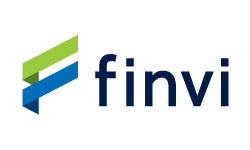Source: site

Payments are often invisible. At least until they fail — then, all of a sudden, they become incredibly visible.
But keeping payments invisible is no small feat in today’s dynamic landscape. Payment rails are multiplying, regulations are diverging and consumer expectations are racing ahead of infrastructure; each represents a trendline whose convergence is requiring payments not just to work, but to work better.
“Helping our clients actually do business is the priority. The rest, rails, APIs, AI, are tools to get there,” Rishi Patel, global head of product, Spring by Citi (Citi’s Payment Acceptance platform), told PYMNTS during a discussion for the September 2025 What’s Next in Payments Series, “From Trend to Table Stakes: Mapping the Next Payment Priorities.”
Patel started with the basics. What defines baseline viability in payments today? Not the trendier topics like artificial intelligence (AI) or digital wallets, but whether the system works everywhere a client does business.
“First and foremost, it’s actually ensuring that you have coverage,” he said. “And then it’s about making sure that in the way that you deploy those solutions, a consumer or a business customer can transact as seamlessly as possible. Those are the table stake features that are critical for our client to just get business done.”
Advertisement: Scroll to Continue
That framing, coverage and seamlessness also highlight a persistent tension in payments: established rails, such as card networks, demand optimization and efficiency, while emerging rails, like instant payments, still require adaptation and experimentation.
Patel called this a “spectrum,” with different priorities depending on where a rail sits in its lifecycle. For Citi’s global clients, the key is uniformity across that spectrum.
“Not making our client work differently in each market, but actually giving them a uniform experience is really paramount for us,” Patel said. “That’s the value that we see as Citi.”
From Table Stakes to What’s Next in Global Payments
If consistency is the goal, local complexity can frequently be the obstacle. Each domestic payment rail is architected differently, often dictated by central banks. But instead of fighting fragmentation, Patel said, Citi leans into localization while delivering consistency through APIs, data, and advisory services.
“Our value, especially on the Spring side, is to deliver that consistency and make sure that the experiences deliver seamless integrations to our clients’ ecosystems and help them do business,” Patel said.
He framed it as “localized solutions in the way that they’re intended to be built by the local central banks,” but packaged for multinational merchants as a single, navigable system.
At the same time, payments, particularly global ones, are inseparable from risk. Fraud, digital identity and security controls have moved from innovation themes to “non-negotiables.”
The challenge now is to remove friction without increasing loss rates.
Patel sees the path forward in smarter data, shared more uniformly. In card processing, for example, merchants are used to receiving robust authorization and verification data. But for emerging rails, liability and fraud responsibilities are less defined. Some open banking schemes, for example, shift liability to the initiating bank.
“We really think about the richness of data. What we don’t want to be doing is providing data for card processing one way, data for pay by bank in another way,” Patel said, noting that it is crucial to provide payment data merchants are able to easily integrate, regardless of the underlying mechanism.
The goal is to help merchants spot patterns across rails, be it transaction size, instrument type or geographic variations, all without reinventing their fraud systems for each method.
And no discussion of modern payments is complete without mentioning ISO 20022, the global standard for richer payments data. Patel sees it as transformative. Richer invoice information, purchase details and structured fields can feed loyalty platforms, improve customer insights and enable repeat business.
“That standardization is really allowing our customers to think about how they use data to just do business more efficiently,” he said.
From What’s Next in Payments to the Future of Global Commerce
Payments may be infrastructure, but in a digital-first economy, they are also an experience. Consumers want frictionless checkout, instant confirmation and flexibility in payment methods. Merchants, meanwhile, must juggle regulatory differences and incomplete dispute processes.
“Anyone building a payments ecosystem without [immediacy] front and center is missing the mark,” Patel said, adding that instant settlement and instant gratification are no longer perks but table stakes.
The implication: payments innovation isn’t just about rails, APIs or fraud detection. It’s about rethinking the entire end-to-end flow, from how consumers shop to how merchants orchestrate transactions.
Consent and trust are also critical, especially when offering choices like buy now, pay later (BNPL), wallets or A2A transfers. Merchants should give customers clarity, options and the ability to revoke consent to avoid eroding trust.
“You don’t want to be doing something where the consumer is then challenging, ‘Why did you make that decision?’” Patel warned, stressing that for Citi’s Spring platform, the North Star remains clear: deliver business value by making payments consistent, efficient and ready for what’s next.
PYMNTS CEO Karen Webster is one of the world’s leading experts in payments innovation and the digital economy, advising multinational companies and sitting on boards of emerging AI, HealthTech and real-time payments firms. In 2009, she founded PYMNTS.com, a top media platform covering innovation in payments, commerce and the digital economy. Webster is also the author of the NEXT newsletter and a co-founder of Market Platform Dynamics, specializing in driving and monetizing innovation across industries.
Rishi Patel is the global head of product, Spring by Citi (Citi’s Payment Acceptance platform).




